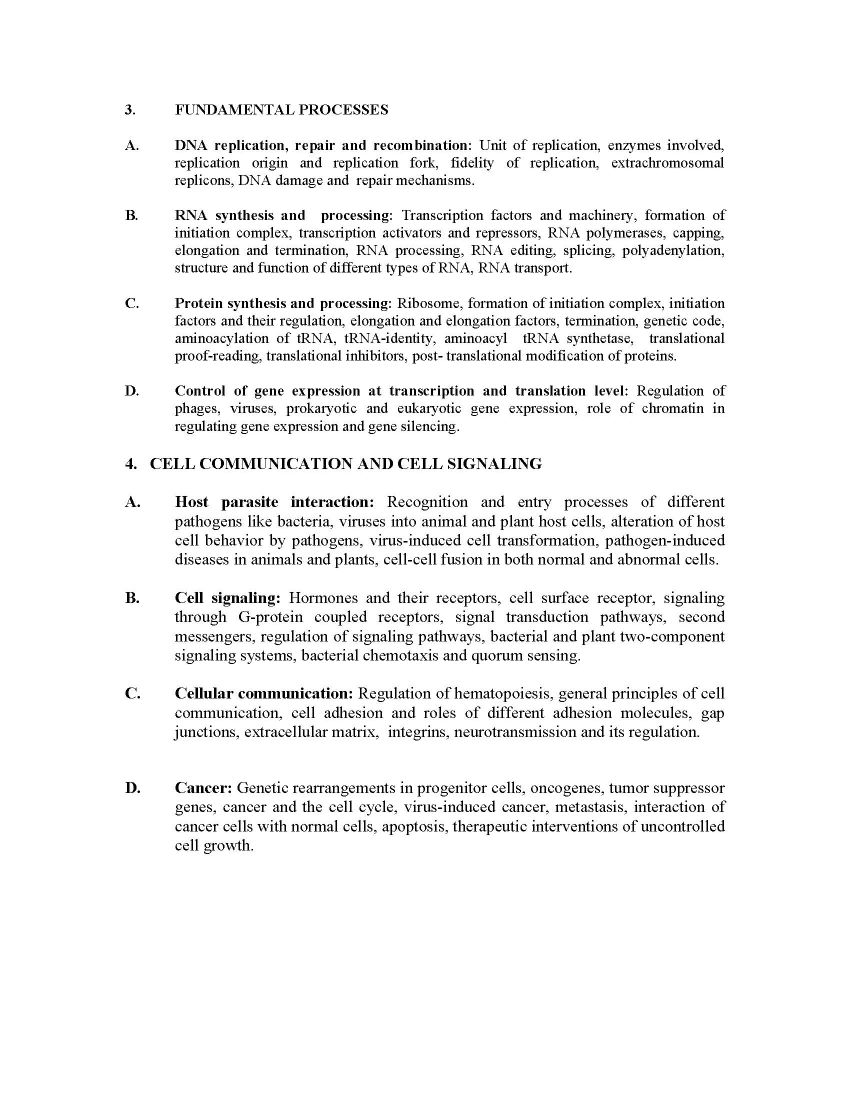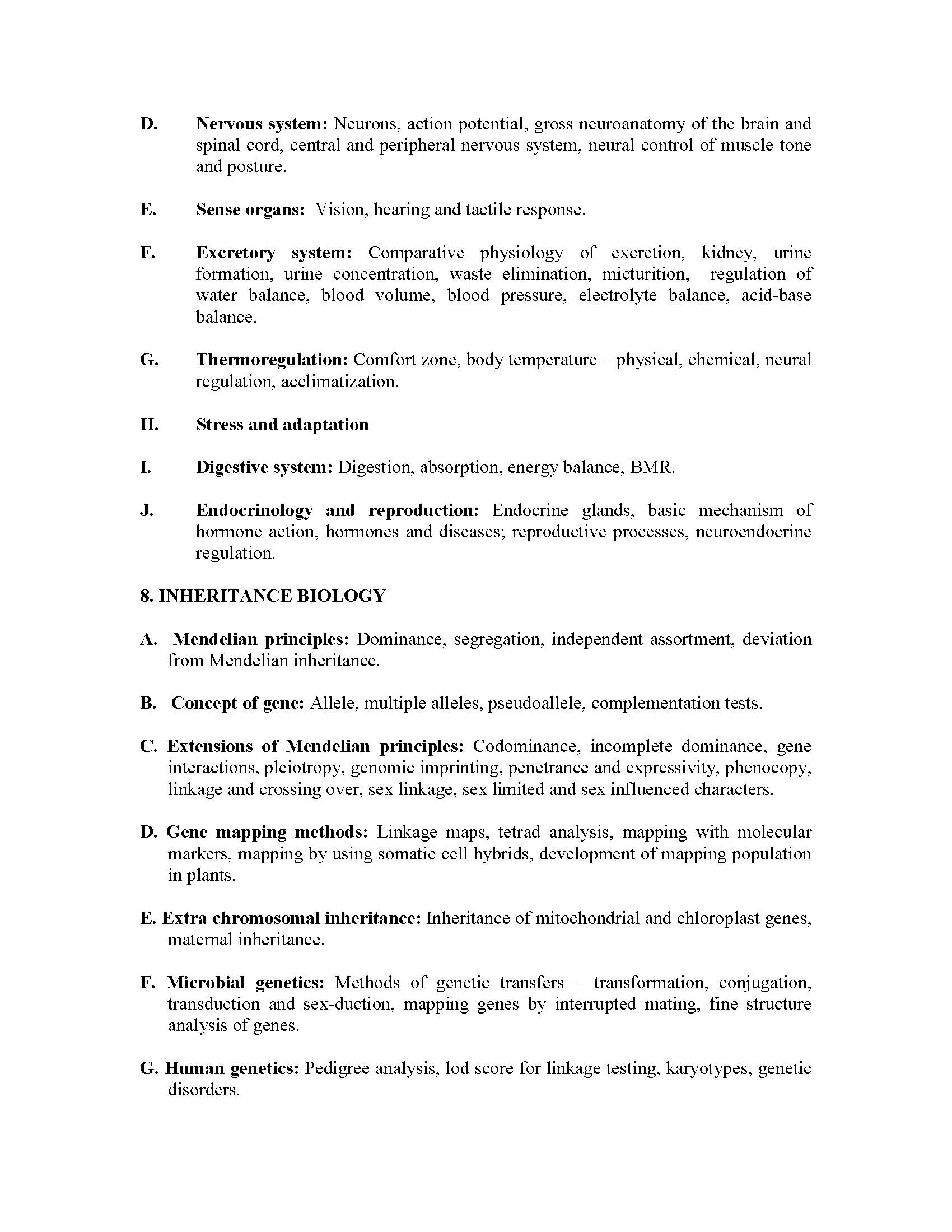|
#1
June 25th, 2014, 10:02 AM
| |||
| |||
| Complete Syllabus to Prepare for CSIR NET Life Sciences Exam
will you please provide me syllabus for CSIR NET Life Sciences examination in PDF file format ? Here I am giving you syllabus for CSIR NET Life Sciences examination in PDF file attached with it so you can get it easily. 1. MOLECULES AND THEIR INTERACTION RELAVENT TO BIOLOGY A. Structure of atoms, molecules and chemical bonds. B. Composition, structure and function of biomolecules (carbohydrates, lipids, proteins, nucleic acids and vitamins). C. Stablizing interactions (Van der Waals, electrostatic, hydrogen bonding, hydrophobic interaction, etc.). D. Principles of biophysical chemistry (pH, buffer, reaction kinetics, thermodynamics, colligative properties). E. Bioenergetics, glycolysis, oxidative phosphorylation, coupled reaction, group transfer, biological energy transducers. F. Principles of catalysis, enzymes and enzyme kinetics, enzyme regulation, mechanism of enzyme catalysis, isozymes. G. Conformation of proteins (Ramachandran plot, secondary, tertiary and quaternary structure; domains; motif and folds). H. Conformation of nucleic acids (A-, B-, Z-,DNA), t-RNA, micro-RNA). I. Stability of protein and nucleic acid structures. J. Metabolism of carbohydrates, lipids, amino acids, nucleotides and vitamins. 2. CELLULAR ORGANIZATION A. Membrane structure and function: Structure of model membrane, lipid bilayer and membrane protein diffusion, osmosis, ion channels, active transport, ion pumps, mechanism of sorting and regulation of intracellular transport, electrical properties of membranes. B. Structural organization and function of intracellular organelles: Cell wall, nucleus, mitochondria, Golgi bodies, lysosomes, endoplasmic reticulum, peroxisomes, plastids, vacuoles, chloroplast, structure & function of cytoskeleton and its role in motility. C. Organization of genes and chromosomes: Operon, interrupted genes, gene families, structure of chromatin and chromosomes, unique and repetitive DNA, heterochromatin, euchromatin, transposons. D. Cell division and cell cycle: Mitosis and meiosis, their regulation, steps in cell cycle, and control of cell cycle. E. Microbial Physiology: Growth, yield and characteristics, strategies of cell division, stress response. 3. FUNDAMENTAL PROCESSES A. DNA replication, repair and recombination: Unit of replication, enzymes involved, replication origin and replication fork, fidelity of replication, extrachromosomal replicons, DNA damage and repair mechanisms. B. RNA synthesis and processing: Transcription factors and machinery, formation of initiation complex, transcription activators and repressors, RNA polymerases, capping, elongation and termination, RNA processing, RNA editing, splicing, polyadenylation, structure and function of different types of RNA, RNA transport. C. Protein synthesis and processing: Ribosome, formation of initiation complex, initiation factors and their regulation, elongation and elongation factors, termination, genetic code, aminoacylation of tRNA, tRNA-identity, aminoacyl tRNA synthetase, translational proof-reading, translational inhibitors, post- translational modification of proteins. D. Control of gene expression at transcription and translation level: Regulation of phages, viruses, prokaryotic and eukaryotic gene expression, role of chromatin in regulating gene expression and gene silencing. 4. CELL COMMUNICATION AND CELL SIGNALING A. Host parasite interaction: Recognition and entry processes of different pathogens like bacteria, viruses into animal and plant host cells, alteration of host cell behavior by pathogens, virus-induced cell transformation, pathogen-induced diseases in animals and plants, cell-cell fusion in both normal and abnormal cells. B. Cell signaling: Hormones and their receptors, cell surface receptor, signaling through G-protein coupled receptors, signal transduction pathways, second messengers, regulation of signaling pathways, bacterial and plant two-component signaling systems, bacterial chemotaxis and quorum sensing. C. Cellular communication: Regulation of hematopoiesis, general principles of cell communication, cell adhesion and roles of different adhesion molecules, gap junctions, extracellular matrix, integrins, neurotransmission and its regulati      Last edited by Neelurk; March 20th, 2020 at 09:09 AM. |